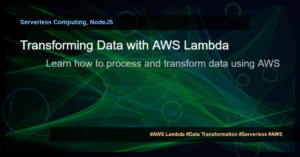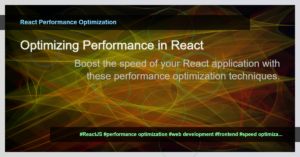Are you curious about the latest advancements in web development? Have you heard the buzz surrounding serverless computing? In this article, we will delve into the fascinating world of serverless computing and explore its impact on web development.
Imagine building a web application without worrying about server management or infrastructure scaling. Sounds too good to be true, right? Well, serverless computing makes it possible. By abstracting away the underlying infrastructure, developers can focus solely on writing code and building features.
So, what exactly is serverless computing? In simple terms, it is a cloud computing execution model where the cloud provider dynamically manages the allocation and provisioning of servers. Instead of provisioning and paying for fixed server instances, you only pay for the actual execution time and resources consumed by your code.
One of the key advantages of serverless computing is its scalability. With traditional server-based architectures, scaling involves predicting the peak load and provisioning enough servers to handle it. However, with serverless, scaling is automatic and happens based on the incoming workload. This means your application can handle sudden spikes in traffic without any manual intervention.
The architecture of serverless computing is centered around functions. Function as a Service (FaaS) is the core of serverless platforms. Each function is a small, self-contained unit of code that performs a specific task. These functions are triggered by events, such as HTTP requests or changes in database records. When an event occurs, the corresponding function is executed, and the result is returned to the client.
There are several popular serverless platforms available, including AWS Lambda, Azure Functions, and Google Cloud Functions. Let’s take a closer look at AWS Lambda, for example. Lambda allows you to write your code in multiple programming languages, including Node.js, Python, Java, and C#. You can define triggers for your functions, such as API Gateway requests or changes in an Amazon S3 bucket. When a trigger occurs, Lambda automatically runs your code and scales it as necessary.
Here’s an example to illustrate the power of serverless computing. Suppose you want to build a chatbot that provides weather information. With serverless, you can create a weather function that communicates with a weather API and returns the forecast based on user input. This function can be triggered by an HTTP request from your chatbot interface. Without serverless, you would need to manage the server infrastructure, handle scaling, and constantly monitor its performance. With serverless, you can focus on writing the weather function and let the platform handle the rest.
In conclusion, serverless computing is revolutionizing the field of web development by providing a scalable, event-driven architecture. It allows developers to build applications without worrying about infrastructure management, thus enabling faster development and deployment cycles. Keep an eye out for serverless platforms like AWS Lambda, Azure Functions, and Google Cloud Functions as they continue to evolve and shape the future of web development.
“With serverless, you can focus on writing the weather function and let the platform handle the rest.”
So, are you ready to embrace serverless computing and unlock its potential in your web development projects? Start exploring this exciting technology and take advantage of its benefits today!







